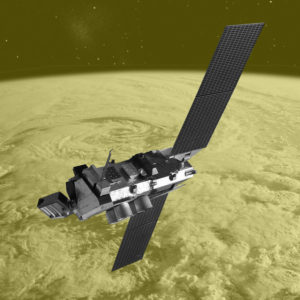What Made The Race So Significant
The Space Age spawned two outstanding space programs as a result of the hot competition between the United States and the Soviet Union. Both countries gave primary emphasis in their space efforts to a combination of national security and foreign policy objectives, turning space into an area of active competition for political and military advantage. At first, this charged political environment accommodated nothing more than symbolic gestures of collaboration. Only in the late 1980s, with warming political relations, did momentum for major space cooperation begin to build. As the Soviet Union neared collapse, with its ideological underpinnings evaporating, the impetus for the arms race and competition in space declined, allowing both countries to seriously pursue strategic partnerships in space.
Fear of the enemy
After World War II drew to a close in the mid-20th century, a new conflict began. Known as the Cold War, this battle pitted the world’s two great powers–the democratic, capitalist United States and the communist Soviet Union–against each other. Beginning in the late 1950s, space would become another dramatic arena for this competition, as each side sought to prove the superiority of its technology, its military firepower and–by extension–its political-economic system.
In 1957 the Soviet Union sent the first satellite into Earth’s orbit. Then in 1961 they sent the first man into space. Yuri Gargarin in 1961 orbited around Earth and returned back to the surface safely. At that time nobody really knew if a human could survive in space. This was a remarkable accomplishment in the history of science and it brought great fear to the American people. If the Soviets could sent a man into orbit, they could also put an atomic bomb into orbit.
If the Soviets could send a man into orbit, they could also put an atomic bomb into orbit.
Project Mercury was the United States’ first real response to the Sputnik and to Gagarin’s flight. This was a spaceflight program that ran from 1958 to 1963. During these years they sent Alan Shepard, first American into space, and John Glenn, first American to orbit around Earth. In May of 1961, President John F Kennedy announced that by the end of the decade, they will send a man to land on the moon.
Staying alert
The bumpy U.S.-U.S.S.R. relationship in the years between 1957 and 1991 often was characterized by periods of mistrust and overt hostility (e.g., the U-2 incident, Cuban Missile Crisis, Vietnam War, Soviet invasion of Afghanistan and President Ronald Reagan’s depiction of the Soviet Union as an “evil empire”). Periods of détente, in contrast, led to the Limited Test-Ban Treaty in 1963, the Strategic Arms Limitation Treaty in 1972, and an emerging U.S.-Soviet rapprochement during 1985-1991. Throughout this political roller-coaster period of history, both countries increased areas of coop-eration, including space, as a symbol of warmer relations while cutting cooperation off when ties worsened.
The technological superiority required for such supremacy was seen as necessary for national security, and symbolic of ideological superiority. The Space Race spawned pioneering efforts to launch artificial satellites, unmanned space probes of the Moon, Venus, and Mars, and human spaceflight in low Earth orbit and to the Moon.The Space Race has left a legacy of Earth communications and weather satellites, and continuing human space presence on the International Space Station. It has also sparked increases in spending on education and research and development, which led to beneficial spin-off technologies.

